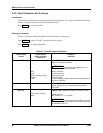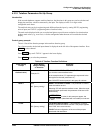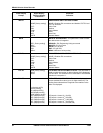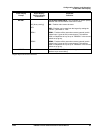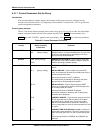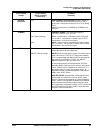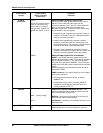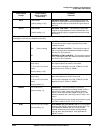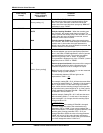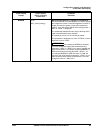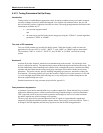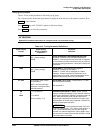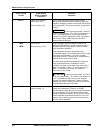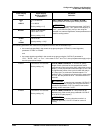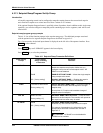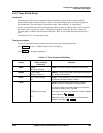
DR4300 Circular Chart Recorder
98 DR4300 Circular Chart Recorder Product Manual 12/03
Lower Display
Prompt
Upper Display
Range of Setting
or Selection
Parameter
Definition
FAILSF 0 % to 100 %
[factory setting = 0]
FAILSAFE OUTPUT VALUE—Select the value you want
the output to be when power is restored after a power
down. The value used here will also be used as the
output level if the input fails when input group “BRNOUT”
parameter is set to “NONE”.
FSMODE
AUTO
MAN
FAILSAFE MODE
Failsafe Latching Disabled –
When the recorder goes
into “Failsafe”, the control mode does not change. The
output assumes the failsafe value if the recorder is in auto
mode. When the cause of failsafe is removed, normal
automatic control action resumes.
Failsafe Latching Enabled – When the recorder goes
into “Failsafe”, the control mode changes to Manual. If the
recorder was in Auto mode, the output assumes the
failsafe value. When the cause of failsafe is removed, the
recorder remains in manual mode.
PBorGN
PB
GAIN
[factory setting]
PROPORTIONAL BAND or GAIN—Use this parameter
to choose whether you want to specify the proportional
term in the PIDA or PDMR algorithms in terms of percent
proportional band or of gain. Your choice here affects
which tuning prompt, “PB” or “GAIN”, is displayed.
This parameter is displayed only if the “CTRALG” (control
algorithm) is set to “PIDA” or “PDMR”.
Percent proportional band is the percent of the range of
the measured variable for which a proportional-only
controller will produce a 100 % change in its output.
Gain is the ratio of output change (%) over the measured
variable change (%) that caused it.
The relationship between %PB and gain can be
expressed as: GAIN = 100
%PB
For example, setting PB = 20 % will have the same effect
on control as setting GAIN = 5. Therefore, if the change in
the PV input were 3 % of the whole range of possible
input values, then the resulting change in the output due
to proportional only control would be 15 % of the output’s
range, regardless of whether PBorGN = PB and PB = 20,
or PBorGN = GN and GAIN = 5.
Another example: Setting PB = 50 % will have the same
effect as setting GAIN = 2. In this case, if the change in
input were again 3 % of range, then the resulting output
change would be 6 %.
ATTENTION
If the setting of PBorGN is changed,
you must change the value of the associated tuning
parameter (“PB” or “GAIN”) if you want to maintain the
same control action. For example, suppose PBorGN = PB
and the value of tuning parameter “PB” = 20. If you
change PBorGN to GAIN, the value of tuning parameter
“GAIN” will now be 20 (the value formerly assigned to
“PB”). If you want the same control action you had before,
you must change the value of “GAIN” to 5.



